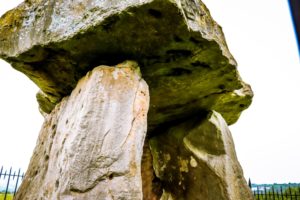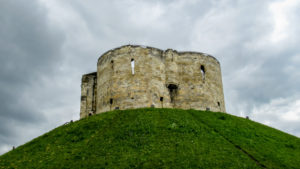At the top of the hill, on its eastern side, is a circular mound of earth, hollowed out in the center. This is the remains of a Bronze Age tumulus or round barrow, an example of a prehistoric monument that can be found all over Britain.
Round barrows were used as burial mounds from the Neolithic period (c2200 BC) right through the Bronze Age (c1000 BC) and again in the Anglo Saxon period. They may cover an individual or multiple burials and may also have been used for cremations.









